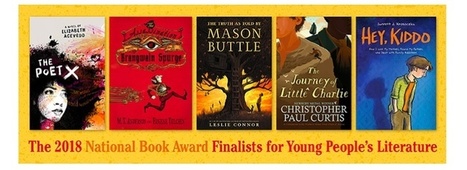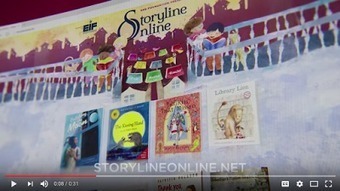 Your new post is loading...
 Your new post is loading...

|
Scooped by
John Evans
|
"The following are a few of the reasons students might be reluctant to read. It is by no means an exhaustive list. There are some excellent researchers and teachers who have been exploring this topic in-depth. However, I would like to focus on four different trends that I noticed as a middle school teacher and explore of a few ideas for how to address these issues."
Free access to all of the chosen stories. -JL "It can be a challenge to get middle schoolers interested in reading. The thought of tackling a thick novel can be overwhelming, especially during distance learning. Short stories are always a great choice.
"In addition to requiring less of a time commitment, they are an easy way to expose your students to new authors and genres. Also, the best short stories are every bit as engaging and meaningful as the best novels. We asked our audience on Facebook and Instagram to share some of their favorite short stories for middle schoolers. Here’s the big list!"
Via Jim Lerman

|
Scooped by
John Evans
|
The International Literacy Association has put out a new brief endorsing "systematic and explicit" phonics in all early reading instruction.
"English is an alphabetic language. We have 26 letters. These letters, in various combinations, represent the 44 sounds in our language," the ILA brief released last week reads. "Teaching students the basic letter-sound combinations gives them access to sounding out approximately 84% of the words in English print."
It's a strong statement from an influential, big-tent organization whose members, which include teachers, researchers, and parents, have traditionally held a wide range of views on reading approaches.
"It's kind of a refreshing piece," said Timothy Shanahan, a professor emeritus at the University of Illinois at Chicago. "A lot of people think ILA is an anti-phonics group, but it's a large group."

|
Scooped by
John Evans
|
Teachers are seeking new training to understand the brain science around dyslexia, the most commonly reported disability among children.

|
Scooped by
John Evans
|
As elementary students learn how to read, teachers administer reading fluency tests and listen to students read passages. During these reading fluency tests, teachers listen for speed, accuracy, and expression. Nothing can replace this formal assessment, but it’s helpful to teach students to track their words per minute between these reading fluency assessments. Tracking their words per minute can help students to appreciate that the more they practice reading a passage, the more words they will be able to read in a minute.
In a coaching session with a second-grade teacher, I suggested we try using Voice Typing in Google Documents to help students track how many words they read in a minute. I hoped that giving them the tools to track their words per minute might motivate them to stay focused on the task of reading a challenging passage.

|
Scooped by
John Evans
|
This model provides ways of examining the content of teaching and assessment to ensure all four resources are being addressed and taught explicitly. It encourages that reading and writing always be situated in authentic contexts and purposes and acknowledges that text goes beyond print and paper.

|
Scooped by
John Evans
|
Because I believe in the power of a shared experience and dialogue around books, I made sure to use Book Clubs as a format in my English classes. I was truly able to assess whether my students had connected with the themes and characters in the book and they were talking about the novel in a much more authentic way. It is also because of this, that I have always been a teacher-advisor for a Book club in any school in which I have taught.
When I learned about the Global Read Aloud started by Pernille Ripp, many years ago, it was the shared experience of books that drew me in and the idea of expanding the perspectives beyond the homogeneous groups we sometimes (not always) encounter in our classrooms. The ability, in 2019, to connect with others to share opinions about a work of fiction is so easy and so powerful.

|
Scooped by
John Evans
|
Partnering on note taking, a strategy developed for struggling readers, helps middle and high school students process what they read.

|
Scooped by
John Evans
|
"Reading disorders are among the most prevalent learning difficulties children have. In a mixed ability classroom, an estimated one in 10 children will have dyslexia and up to 20% need training to develop the ability to isolate sounds in words.
In 2016, an OECD report found English teenagers are the most illiterate in the developed world, with many between the ages of 16 and 19 only having a “basic” grasp of maths and English. Children at risk of reading failure can easily become vulnerable learners, and lose their self-esteem, motivation and confidence without support. These children see reading as a barrier rather than a tool for learning. It’s no wonder, then, that teaching reading is one of the highest priorities in schools.
Over the past decade there has been a wealth of studies and educational research into reading. Much more is now understood about why some children fail to crack the code on their own. With the right support, dramatic improvements can be made to bring below-average readers within the normal range for their age."

|
Scooped by
John Evans
|
If I had to pick one thing that makes the biggest difference in the quality of any person’s education, the quality of their life, really, it would be reading. And I’m not really talking about basic literacy—not about the ability to read—I’m talking about reading for pleasure, to satisfy curiosities, to understand how people work and find solace in knowing we are not the only ones who think and feel the way we do.
That kind of reading.
But when I see what my kids do in school for “reading,” it doesn’t really look like reading. I ask them what books they are reading in school, and a lot of times they give me a blank stare. What they do in reading, they tell me, is mostly worksheets about reading. Or computer programs that ask them to read passages, not books, and answer multiple-choice questions.

|
Scooped by
John Evans
|
The kids are back to school and it’s time to hit the books! We asked author Alice Kuipers to share her best tips for encouraging kids to read.

|
Scooped by
John Evans
|
Babies start reading by recognizing pictures, and then continue their love of stories by progressively improving their pattern recognition and visual skills. You can start reading to your kid even before he or she is born! Picture books are a favorite for this very reason, and from a classic board book like Eric Carle′s The Very Hungry Caterpillar to a comic board book like Wonder Woman ABCs, comics can be around from the very start.

|
Scooped by
John Evans
|
"One of my favorite questions to ask educators is... "so, what are you reading?" Whether I'm visiting a school, working with a group of principals or chatting with other librarians on twitter (yes, I'm looking at you #2jennsbookclub), I love to hear about the books my colleagues can’t put down."
|
Have you heard about the Science of Reading research? We've simplified some of the main points for you in thi
Via Von Sawers

|
Scooped by
John Evans
|
For many families, reading is a pleasurable activity when kids are young, but becomes a battle as kids get older. Parents are more aware than ever that strong reading skills are fundamental to academic success. Teachers also feel pressure to make sure students are reading on or above grade level, often with their evaluations and salaries hanging in the balance. On top of it all, parents are increasingly finding that it’s hard to tempt kids to read when there are more alluring entertainment options like video games, social media and TV to occupy their time. All of this has turned reading into a battleground, when it should be a joyful experience.
“Your job is to teach your children how to love to read,” said Pamela Paul on KQED’s Forum program. Paul edits the New York Times Book Review and co-authored, with Maria Russo, the book How to Raise a Reader.
Paul understands parental anxiety about setting children up for success -- she has three children herself -- but she reminds parents that it’s the teacher's job to teach kids how to read. They are the ones focused on raising reading levels and giving assessments to determine reading levels. If parents focus too much adingon their child’s reading level, obsessing over what group they’re in and how they compare to other students, they risk making reading seem like a chore to their kids.

|
Scooped by
John Evans
|
Compared with the past, the majority of young adults don’t read for pleasure. It’s not that they can’t. It’s that they choose not to.
In 1980, 60 percent of 12th graders said they read a book, newspaper or magazine every day that wasn’t assigned for school, one study found. By 2016, only 16 percent did—a huge drop, even though the book, newspaper or magazine could be one read on a digital device (the survey question doesn’t specify format). The number of 12th graders who said they had not read any books for pleasure in the last year nearly tripled, landing at one out of three.
As a librarian, that hurts my heart more than a little bit. Having spent almost half my career trying to put the right book in the hands of every kid, it feels more than a little demoralizing.
Reading has the potential to open doors, expand horizons, and provide escape. But it’s also the perfect vehicle for information, for figuring out a how-to or just keeping up with interests that have nothing to do with a book. In the academic world, with the best of intentions toward churning out lifelong readers, I think sometimes we make the path to readerhood a bit single-minded.

|
Scooped by
John Evans
|
Books are an incredible tool to teach young girls to know their value. Now that spring is here, I’ve got some great picks to share. Whether these books encourage your girls to speak up, introduce them to women and girls who changed the world, or just show them a character that’s like them, I hope they inspire your daughters like they inspired mine.

|
Scooped by
John Evans
|
We have been teaching students how to become better readers and writers for years. With mentor texts, we teach our students about the different genres, text structures, and features that exist within books. Students learn how to identify characters and plots, retell events, or set up a table of contents to reflect the main idea and details of a new writing piece.
The good news is, we can use these same instructional choices during our math instruction. Just as books have a variety of text structures (narrative, informational, biographical) and features (characters, events, language, labels) so too, do math word problems. When we show students how to identify these structures and features within math problems, we increase their ability to comprehend them, solve them, and eventually become the authors of their own math stories. Research shows that readers who can identify the structure of a text are better able to locate the information they need for successful comprehension (Williams, J.P., 2003). This is exactly the result we are looking for when students are solving word problems. We want students to identify the text structure of a math problem, recognize which part is missing, and use questions and known relationships to solve for the missing value.
On Feb. 1, 2019, World Read Aloud Day celebrates the pure joy of oral reading with kids of all ages. Created by LitWorld, past years have found over 1 million people in 100 countries joining togeth…
Via Tom D'Amico (@TDOttawa)

|
Scooped by
John Evans
|
So when I hear teacher’s tell students that graphic novels are too easy. That comic books are not real reading. That it is time to pick a “real” book. That they can read books like that for fun but not for learning, I tend to get a bit upset. You see, comics are what kept me reading long into the night as a child when books seemed like too much work. Graphic novels are what make my students who declare they hate reading actually give it a try. Dog Man and all of the other books by Dav Pilkey are what made Thea believe she was a reader. How can we just dismiss that?

|
Scooped by
John Evans
|
The books below will help teachers better understand the emotional impact of students’ reading struggles, the linguistic complexities behind their reading difficulties, and evidence-based approaches to remediate and accommodate their learning differences.

|
Scooped by
John Evans
|
Research shows that reading for pleasure leads to success in school, the workplace, and life. It helps students empathize with their peers and reduces their stress levels.
Unfortunately, as children age, they read less. Parents and teachers report that kids read much less in middle and high school than they did in elementary school. Common Sense Media’s “Children, Teens, and Reading” 2014 research brief reflects this distressing trend:
53 percent of 9-year-olds were daily readers, but only 17 percent of 17-year-olds were.
The proportion of children who “never” or “hardly ever” read tripled from 1984 to 2014. A third of 13-year-olds and 45 percent of 17-year-olds said they read for pleasure one to two times a year, if that.
Many parents recognize that reading is important and want to help reverse this decline. Middle school parents, in particular, are an untapped resource of classroom support. Many of them were active volunteers in their children’s elementary school and would welcome the opportunity to assist again in the classroom.

|
Scooped by
John Evans
|
The countdown is on: In five months, elementary and middle school teachers in the Detroit district will be teaching from all-new curriculum.
District leaders are scrambling to train teachers and prepare families for the switch to new reading and math teaching materials for grades K-5 in reading and K-8 in math. It’s a massive undertaking, and the first time in years Detroit is changing curriculum at this scale.

|
Scooped by
John Evans
|
If I had to pick one thing that makes the biggest difference in the quality of any person’s education, the quality of their life, really, it would be reading. And I’m not really talking about basic literacy—not about the ability to read—I’m talking about reading for pleasure, to satisfy curiosities, to understand how people work and find solace in knowing we are not the only ones who think and feel the way we do.
That kind of reading.
But when I see what my kids do in school for “reading,” it doesn’t really look like reading. I ask them what books they are reading in school, and a lot of times they give me a blank stare. What they do in reading, they tell me, is mostly worksheets about reading. Or computer programs that ask them to read passages, not books, and answer multiple-choice questions.

|
Scooped by
John Evans
|
Storyline Online is an excellent literacy website to use with your kids. It helps immerse kids in engaging reading and storytelling experiences. Storyline Online streams ‘videos featuring celebrated actors reading children’s books alongside creatively produced illustrations. Readers include Viola Davis, Chris Pine, Lily Tomlin, Kevin Costner, Annette Bening, James Earl Jones, Betty White and dozens more.’
|
 Your new post is loading...
Your new post is loading...
 Your new post is loading...
Your new post is loading...








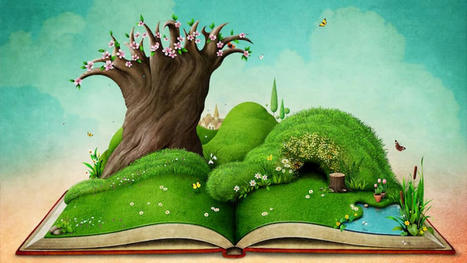

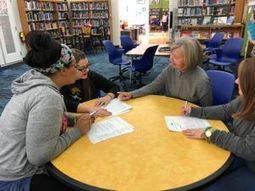
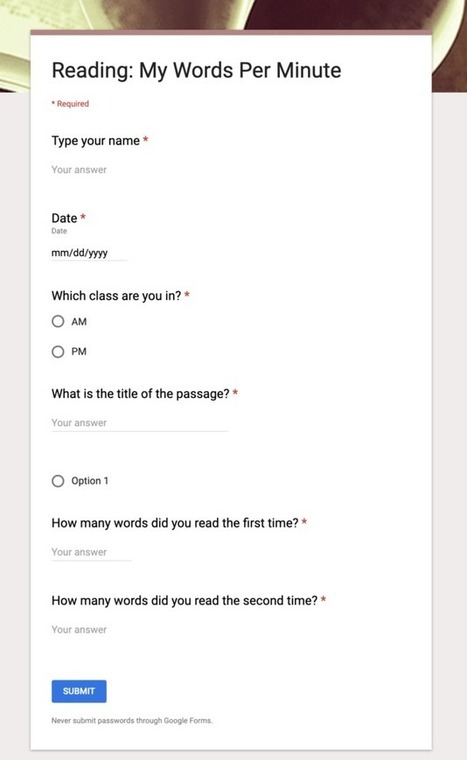

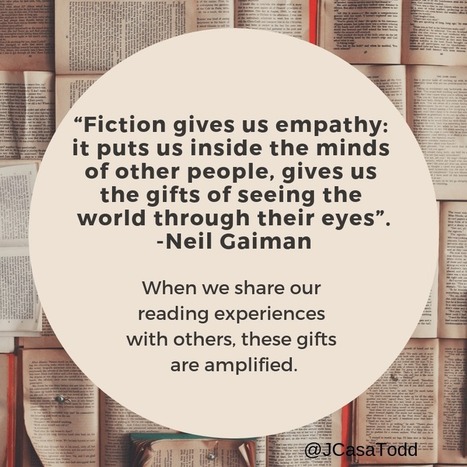

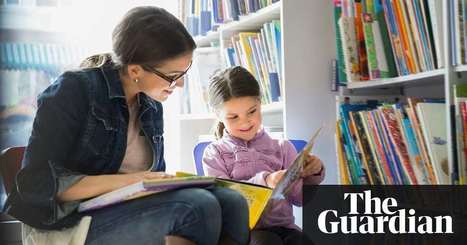
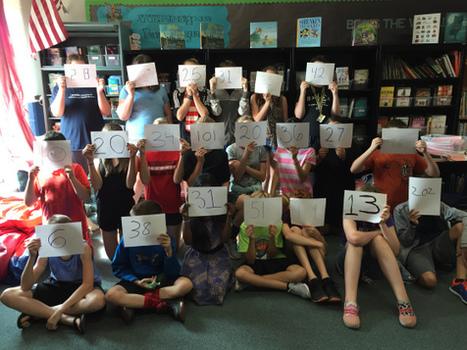

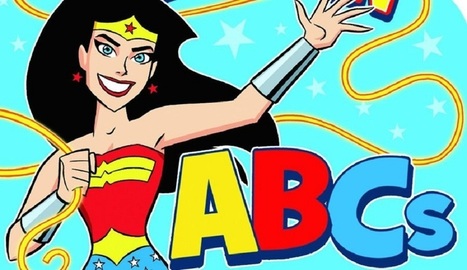
![When Adults Don't Read, Kids Lose! [Infographic + Resources] - The Adventures of LibraryGirl | Professional Learning for Busy Educators | Scoop.it](https://img.scoop.it/gyV38L7x96sBUGp45o4zxTl72eJkfbmt4t8yenImKBVvK0kTmF0xjctABnaLJIm9)






